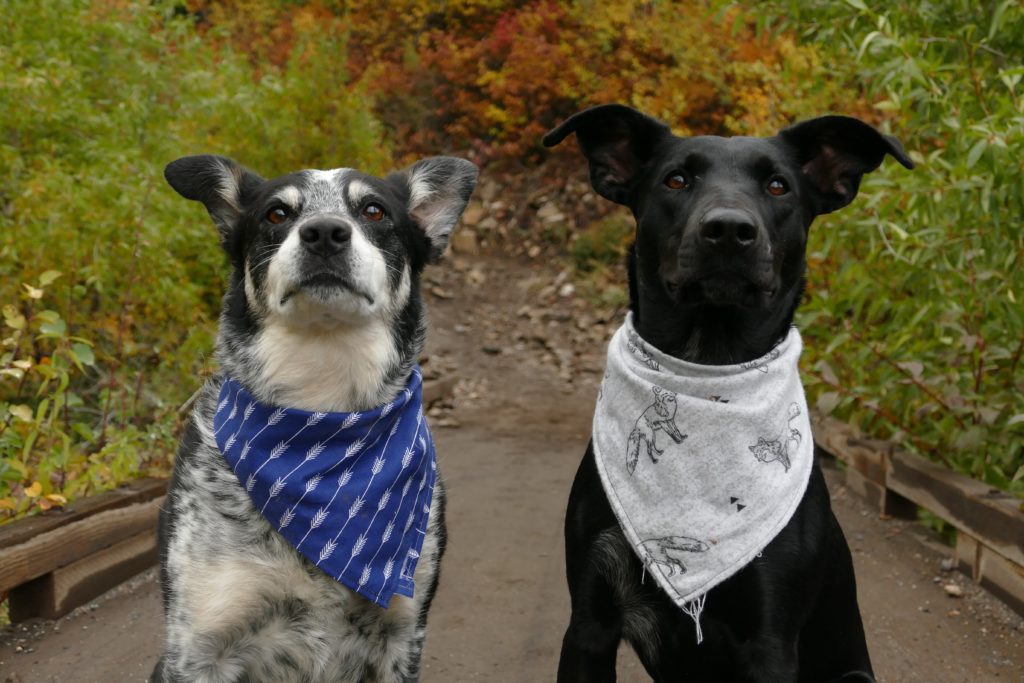
When you add new members to your family, love doesn’t divide – it multiplies. If you own more than one furry friend, you know how much joy and happiness they bring you. So does that mean adopting two puppies at the same time is a great idea? Hold your horses (uh… doggies)! While every situation is different, you may want to think twice before doubling your puppy pleasure.
Why Adopting 2 Dogs Seems Like a Great Idea
Well-meaning owners often think that bringing in two new dogs at the same time is advantageous because:
- It will give the puppy someone to play with/bond with while you’re away or at work.
- They have two children and want each to have the responsibility/joy of owning a pet.
- They want two dogs anyway; no time like the present!
- They want to prevent one more dog from being euthanized.
The more the merrier! Well…not quite. While these are genuine and good-hearted, reasons to adopt two pups, use caution. Many experts, including the Humane Society, recommend strongly against introducing more than one new pet into your home at the same time. Why?
They’ll bond while you’re away or at work.
Wait…that’s a good thing, right? Not exactly. Puppies can form a bond so strong that they will not be able to tolerate being apart. This will prevent the pups from learning how to deal with separation anxiety; it can also keep them from forming strong bonds with humans, which is detrimental to their happiness and yours.
There’s also the risk that they won’t bond while you’re away. “Sibling rivalry” is fairly common in dogs, particularly if they are of the same sex. It can manifest in fighting, attempts to dominate, bullying, and tension. No fun for them – or you.
It’s twice as much work.
Some people think that having two puppies will be less work; after all, they can get their exercise in by playing, and they’ll have each other for socialization and companionship. Not so fast!
Playing does not give them enough physical activity or stimulation; you need to be involved in that. Dogs require regular walking, and, in addition, you must exercise and socialize each pup separately. This allows them to learn to handle new situations without fear or anxiety – and without having to depend on the other dog.
And then there’s the housetraining. Think about how often you need to rush your puppy out the door, or how many times you need to clean up after accidents. Multiply emergencies, messes, and regularly scheduled walks by two.
If you want to get a dog for each child, reconsider. There is – after all – plenty of work for the whole family in caring for just one!
Puppies grow into dogs.
As two cute cuddly pups grow into two full-grown dogs, it can be difficult to handle their “adolescent” years. Like human teens, they’re growing physically, testing boundaries, and have an ample supply of energy (especially when you are tired!). This is where behavioural problems often crop up, and dealing with double the trouble can be too much for their owners to cope with.
And they’re expensive!
Let’s face it: caring for two adult dogs is not cheap. With food, vet appointments, equipment, and replacements for those leather shoes that they chewed up, you can easily experience sticker shock. Having one pet is often much more comfortable for the budget.
If You Have to Adopt Two Puppies
Maybe the breeder won’t separate a pair; maybe the pound will euthanize the dog if you don’t take him. Maybe those big brown puppy eyes got to you and you couldn’t say “no.” Whatever the reason, if you must adopt two puppies:
- Crate them separately. Each dog needs his own space and to learn to use his crate as a place of rest and relaxation.
- Train, socialize, play, and exercise them separately. Take the time to work with each dog individually. This helps reinforce your teaching, provide sufficient physical activity and mental stimulation – and it gives you great bonding time. Each pup needs to learn to trust and feel safe with his owner. This helps prevent dogs from forming a bond so strong that they cannot tolerate being apart. Separation anxiety can be difficult to treat; preventing it is much easier – and much healthier.
- Schedule playtime. The Humane Society recommends that puppies in their first year of life be separated from each other most of the time. Each day, give them 30 minutes to play together. This will help them bond appropriately with each other.
The best way to handle two new puppies at once is to avoid the situation. If you can, adopt one dog at a time and give him the time he needs to adjust (and for you to adjust to him) before deciding to add to your family. If you can’t avoid it, treat with a “separate but equal” approach.


